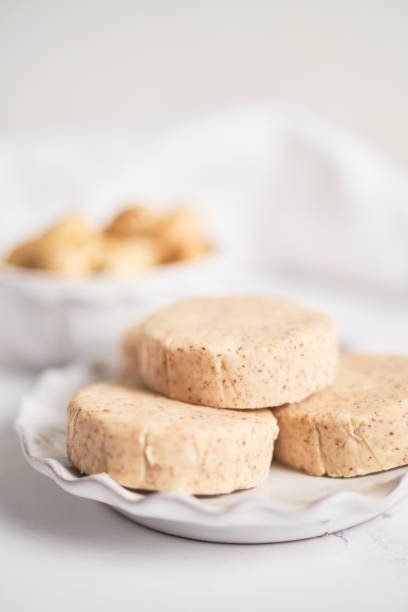Marzipan is a sweet, almond-based confection with a distinct texture and flavour. Its origins are unclear but it is believed to have originated in the Middle East. Marzipan is popular among royalty and the wealthy and is used in a wide variety of desserts. Whether you are a seasoned marzipan fan or have never tried it before, this delicious confection is a sweet and versatile treat.
Origins of Marzipan
Historical Background
Marzipan is a confection made from ground almonds and sugar. It has a long history dating back to ancient times. The earliest recorded recipe for marzipan was found in a 9th-century Arabic cookbook. The recipe was called “Tharid”, which was a sweet dish made with ground almonds, sugar, and rosewater.
In Europe, marzipan became popular during the Middle Ages and was used to decorate cakes and pastries. It was also used to make small figurines and shapes for special occasions. In the 16th century, marzipan was used to make elaborate sculptures for royal banquets.
Geographical Origins
Marzipan’s exact origins are unclear but it was believed to have originated in the Middle East. It became popular in countries like Italy, Spain, and Germany and is still used in a variety of ways today. In Germany, it is commonly shaped into fruits and animals and sold during Christmas. In Italy and Spain, it is used to make traditional desserts. Marzipan’s delicious taste has made it a popular confection around the world.
Ingredients and Production
Key Ingredients
Marzipan is a confectionery product that is primarily made up of two key ingredients: almonds and sugar. Almonds are the main ingredient in marzipan and are used to give it its distinct nutty flavour and texture. The sugar used in marzipan is typically powdered sugar, which is blended with the almonds to create a smooth and sweet taste.
Other ingredients that may be added to marzipan include egg whites, glucose syrup, and almond extract. These ingredients are used to enhance the texture, flavour, and colour of the marzipan.
Manufacturing Process
Marzipan is made by blanching and grinding almonds into a fine powder and then mixing it with powdered sugar to create a smooth paste. It can be moulded into various shapes and decorated with food colouring, chocolate, or other toppings. Marzipan is commonly used in cakes, pastries, and candies for its sweet and nutty flavour.
Culinary Uses
Marzipan is a versatile ingredient that can be used in a variety of culinary applications. Here are some of the most common uses:
Traditional Confections
Marzipan is most commonly used in traditional confections such as marzipan fruits, marzipan logs, and marzipan candy. These confections are made by shaping the marzipan into various shapes and then decorating them with food colouring and other edible decorations. Marzipan fruits, for example, are often shaped into small fruits such as apples, pears, and oranges, and then painted with food colouring to give them a realistic appearance.
Modern Adaptations
Marzipan is a versatile ingredient used in a variety of culinary applications such as filling for cakes, and pastries and as a topping for desserts. It is also used as a flavouring agent in cocktails. Marzipan is a popular ingredient in gluten-free and vegan baking.
Related
Nutritional Information
Marzipan is a sweet confection made from ground almonds, sugar, and sometimes egg whites. It is often used as a decoration on cakes and pastries, and can also be eaten on its own as a candy.
While marzipan is high in calories and sugar, it does contain some beneficial nutrients. One ounce (28 grams) of marzipan contains approximately:
- 150 calories
- 2 grams of protein
- 7 grams of fat
- 18 grams of carbohydrates
- 1 gram of fiber
- 16 grams of sugar
- 40 milligrams of calcium
- 1 milligram of iron
The almonds used to make marzipan are a good source of healthy fats, fibre, and protein. They also contain vitamin E, magnesium, and potassium. However, marzipan is often made with added sugar, which can contribute to weight gain and other health problems when consumed in excess.
It is important to consume marzipan in moderation as part of a balanced diet. Those with diabetes or other health conditions that require monitoring sugar intake should be especially cautious when consuming marzipan.

